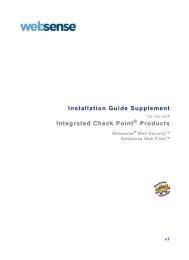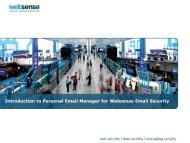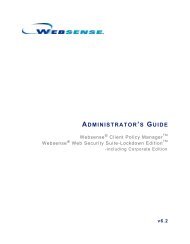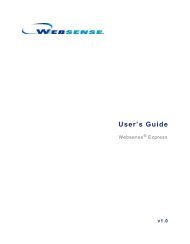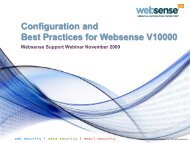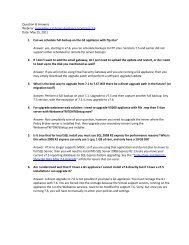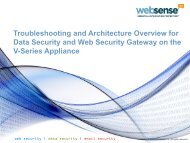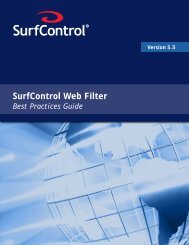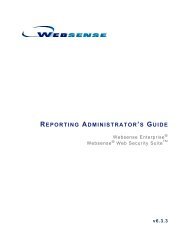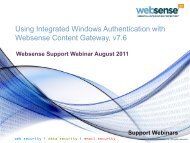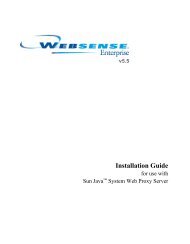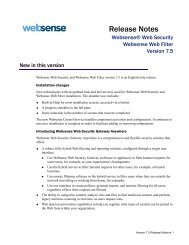Quick Start for Network Agent 5-Step Quick Start See - Websense ...
Quick Start for Network Agent 5-Step Quick Start See - Websense ...
Quick Start for Network Agent 5-Step Quick Start See - Websense ...
You also want an ePaper? Increase the reach of your titles
YUMPU automatically turns print PDFs into web optimized ePapers that Google loves.
<strong>Quick</strong> <strong>Start</strong> <strong>for</strong> <strong>Network</strong> <strong>Agent</strong>Switched Configurations<strong>Network</strong> <strong>Agent</strong> may be connected to a switch or router, as shown here:<strong>Network</strong> <strong>Agent</strong> must see all outbound and inbound traffic. Thus, the (switch) port connected to the<strong>Network</strong> <strong>Agent</strong> machine must see all traffic.On most switches, you can change the port to spanning or mirroring mode. To connect to the networkusing a switch, plug the <strong>Network</strong> <strong>Agent</strong> machine into the port on the switch that mirrors (spans) thetraffic on the gateway or firewall port. The span port mirrors all the traffic that leaves the networksegment, so traffic on monitored ports is simultaneously sent to the monitoring port to which<strong>Network</strong> <strong>Agent</strong> is connected.If a switch that supports bi-directional spanning is used, <strong>Network</strong> <strong>Agent</strong> can function successfullywith a single <strong>Network</strong> Interface Card (NIC) per<strong>for</strong>ming both monitoring and blocking. If the switchdoes not support bi-directional spanning, <strong>Network</strong> <strong>Agent</strong> must use separate NICs <strong>for</strong> monitoring andblocking.<strong>Quick</strong> <strong>Start</strong> 19 <strong>Network</strong> <strong>Agent</strong>



